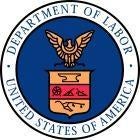This past weekend, the department’s Occupational Safety and Health Administration hit an impressive milestone: 43 years of protecting people in the workplace.
On Dec. 29, 1970, President Richard Nixon signed the Occupational Safety and Health Act of 1970 into law. By the middle of 1971, OSHA was helping prevent workplace fatalities, injuries and illnesses.

While the United States workforce has nearly doubled − with more than 130 million workers across 7+ million job sites − we’ve made significant strides in reducing work-related deaths and injuries since OSHA was created.
Although precise statistics were not kept at the time, it is estimated that around 14,000 workers were killed on the job in 1970, or 38 per day. According to the Bureau of Labor Statistics, that number fell to approximately 4,400 in 2012, or 12 deaths every day. The rate of serious workplace injuries and illnesses has also dropped markedly, from 11 per 100 workers in 1972 to 3.4 per 100 in 2012.
Together with employers, workers, unions, safety and health professionals, OSHA and our state partners have tackled many serious safety hazards and health risks. So while I’d say we’re looking pretty good for 43, our job is far from over.

-
Far too many preventable fatalities and serious injuries continue to occur: More than 3 million working men and women suffered a serious job-related injury or illness in 2012. Such incidents can be devastating for both workers and their families. What’s more, they cost American employers more than $50 billion a year in direct costs alone. Indirect costs – such as lost productivity, and employee training and replacement – can be more than double the direct costs.
-
Additionally, many workers are still exposed to common but dangerous materials, likecrystalline silica, that can cause serious illness and premature death. That’s why OSHA has placed a renewed focused on developing stronger standards to help employers protect the millions of employees currently exposed to crystalline silica.
-
OSHA also has put increased attention on the conditions of temporary workers. We have received too many reports of workers killed the first day on the job, often the result of performing dangerous jobs without adequate training or protective measures. Under an initiative we launched this year, we’ve directed our inspectors to look for the presence of temporary workers during all of our inspections, and if there are any, we’ll assess whether they have been provided required safety training. We are also working directly with employers and staffing agencies to ensure they’re using best practices when it comes to protecting employees, both full-time and temporary, from job hazards.
Since OSHA’s first day on the job, the agency has delivered remarkable progress making the nation’s workers and their workplaces safer. I’m proud to be a part of OSHA’s legacy and we look forward to continuing this critical work for decades to come.


 />i
/>i

